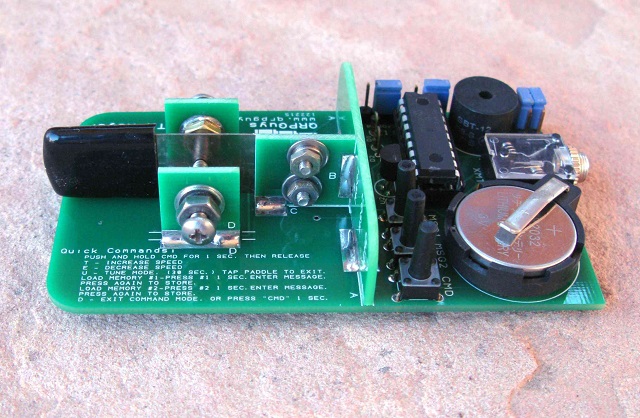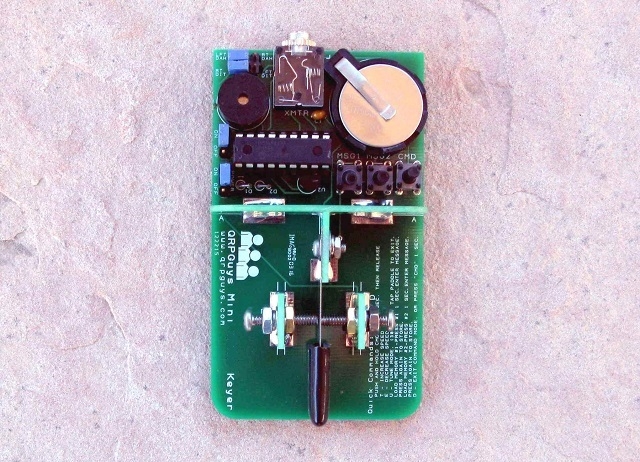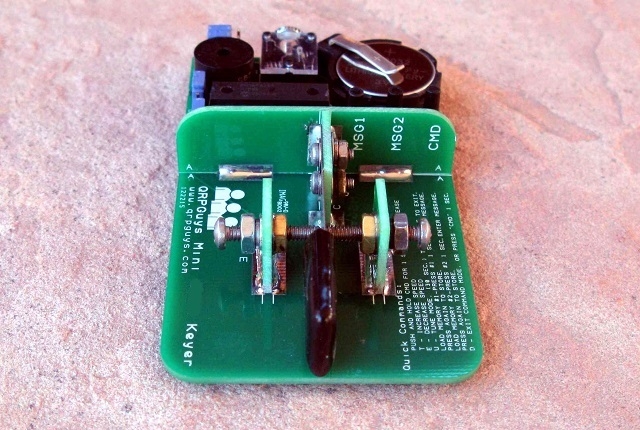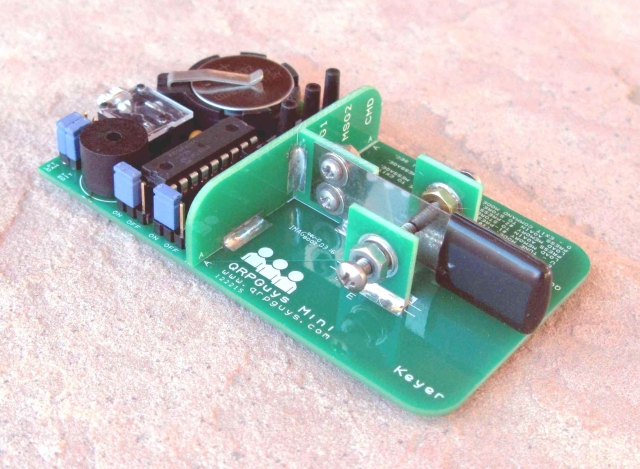QRPGuys Single Lever Keyer/Paddle
This product has been retired. Bare board only available – $10, Go here to order
Your PayPal receipt is your confirmation that we have received your order. Stock availability and shipping volume can delay shipping.
The QRPGuys Mini Keyer/Paddle is the perfect companion keyer for portable or field operations where you don’t want to take your expensive and heavy paddle into the wilds. We have a design that incorporates the mechanical base for the paddle and the electronics of the keyer, into a single unit. It is a basic keyer with a single lever paddle on a small pc board (3.50”L x 2.00”W x .62”H). Lightweight at only 43 grams (1.5oz.), it uses a common lithium CR2032 coin battery powered (not supplied) for extended usage (1mA active, 1uA standby), virtually the shelf life of the battery. The keyer has an adjustable speed from 6WPM-45WPM in 31 increments. The speed setting is stored in the PIC EEPROM, so it is not lost if you move the power jumper to “off”, or change the battery. There are two programmable memories at (63 and 55 characters), continuous playback mode (beacon), and a 30 second “Tune” mode, that can be stopped by tapping the paddle. The PIC16F628A program is in the public domain and available for modification. The PIC chip is in a socket, not locked, and can be easily reprogrammed. There is an onboard piezo speaker for rigs without side tone, which can be jumper disabled for those rigs that do. The dit/dah/right/left selection header is jumper selectable on board. We provide a “power on” header and jumper for storage and transport to prevent accidental activation. The paddle is a single lever design with all stainless steel lever and contact hardware. Contacts are threaded for a wide range of adjustment from a few thousandths of an inch to whatever you feel comfortable with for sending. You use the 3.5mm stereo jack for connection to your rig.
You construct the project from the supplied routed PCB pieces when soldered, form a strong mechanical assembly. The electronics portion uses all through hole components. The tools required are a soldering iron with a small tip, rosin core solder, #1 Phillips screwdriver, needle nose pliers, small side cutters, tweezers for the hardware, and a flat surface to work on. Allow a couple of hours to build. On a difficulty scale of 1 to 5, 5 being the most difficult, this is rated at 3.
Click here for assembly manual




